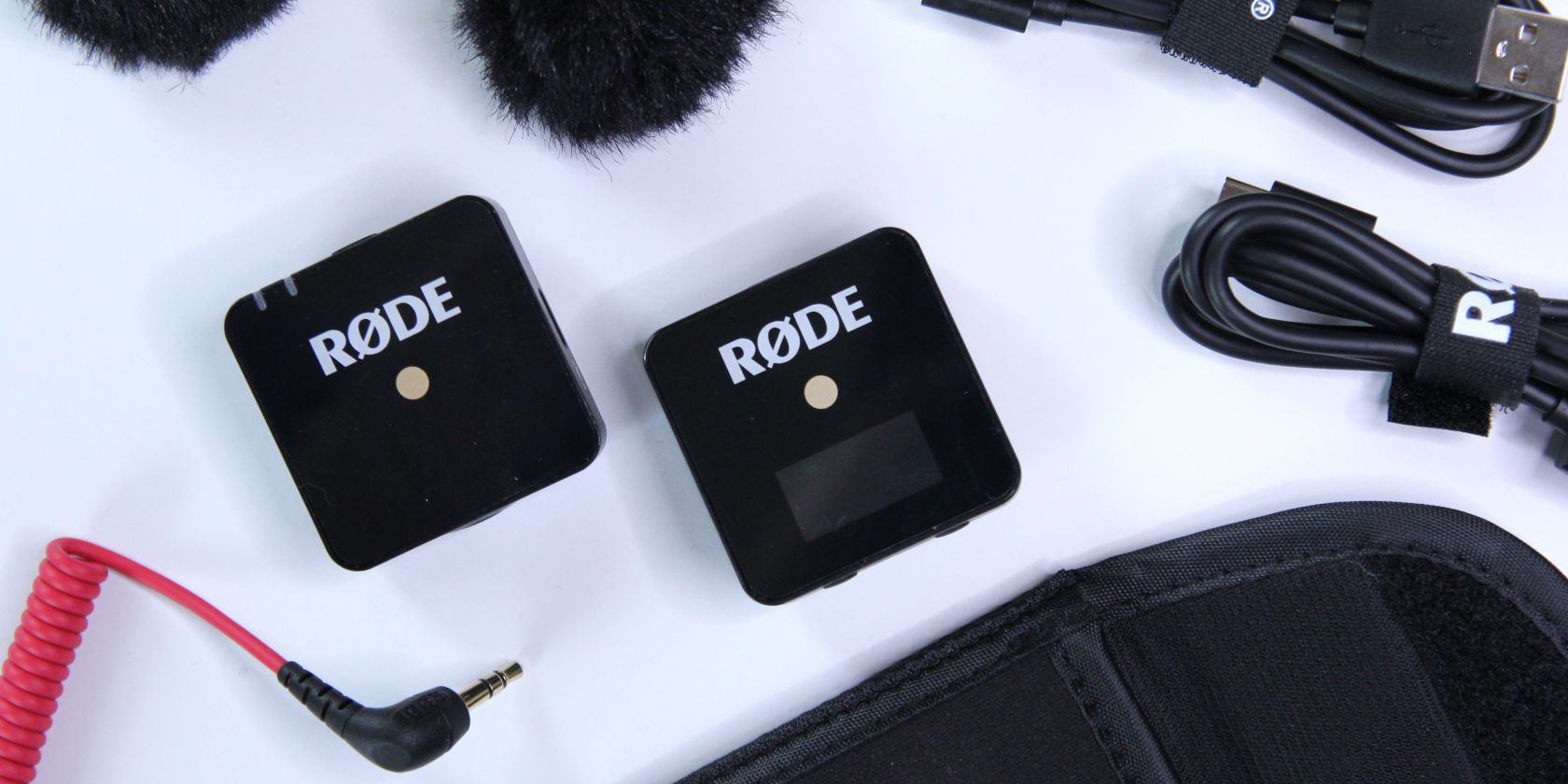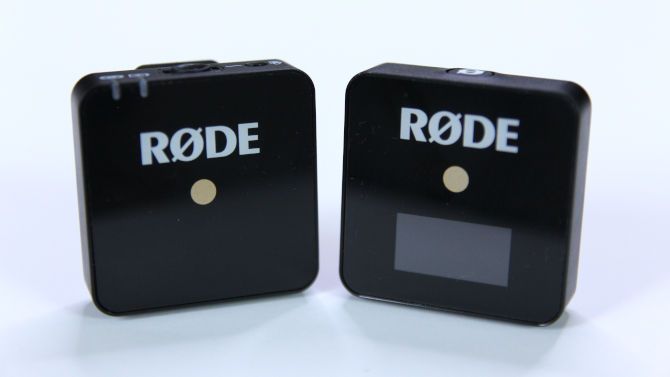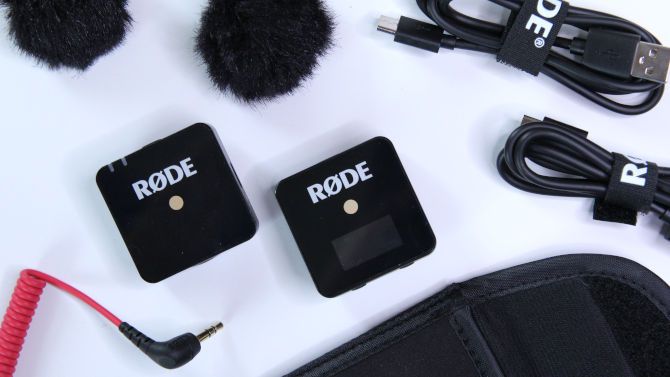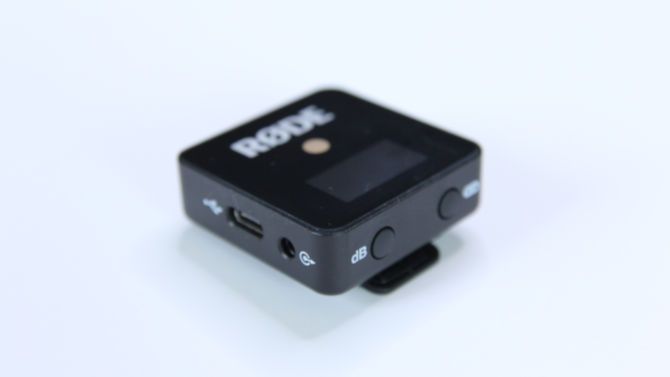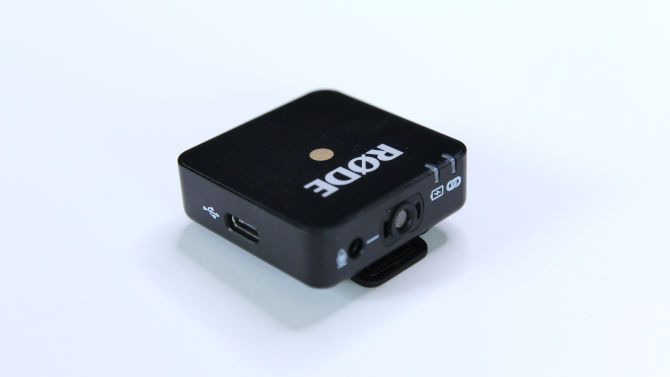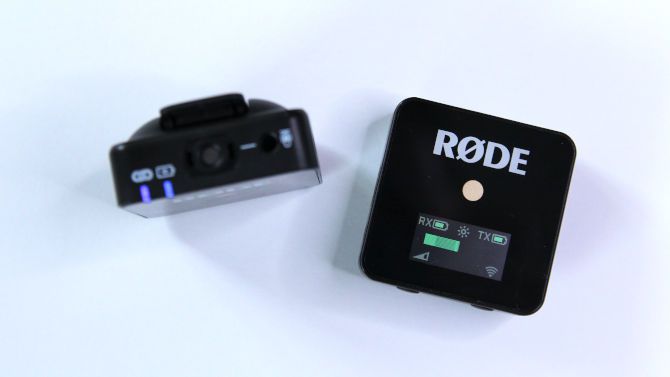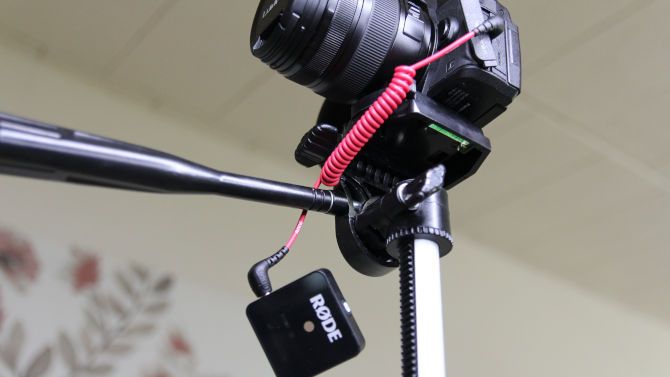RØDE Wireless GO
The RØDE Wireless GO is compact, lightweight, and insanely easy to use. Combine it with a lavalier microphone for high-quality audio anywhere.
Clean audio is essential for YouTube work. While substandard video with crisp audio is still watchable, high-quality video with bad audio will have audiences clicking away in no time.
Unfortunately, clean audio isn't the easiest to set up. You need a microphone, you need a way to record the microphone, and you probably want it to be as hassle-free as possible. Wireless audio solutions tend to be expensive, but with the $199 RØDE Wireless GO, YouTubers now have an affordable, hassle-free option for recording audio.
The RØDE Wireless GO is a two-piece system with a transmitter (TX) and a receiver (RX). Here's what you need to know about it and how much we like it. And at the end of this review, we're giving a set away.
RØDE Wireless GO: Specifications
For the system:
- Physical dimensions (each): 1.7 x 1.8 x 0.7 inches (44.0 x 46.4 18.5 mm)
- Physical weight (each): 1.1 oz (31.0 g)
- Wireless transmission: 2.4GHz only
- Transmission encryption: 128-bit
- Max transmission range: 230 feet (70 meters)
- Max simultaneous systems: 8 TX-RX pairs
- Audio channels per system: 1
- Battery life (each): 7 hours
- Battery type (each): Built-in rechargeable
- Battery charging options (each): USB Type-C
For the TX transmitter:
- TX audio input: 3.5mm TRS microphone
- TX dynamic range: 100 dBA
- TX frequency range: 20 Hz to 20 kHz
- TX polar pattern: Omnidirectional
For the RX receiver:
- RX audio output: 3.5mm TRS microphone
- RX audio gain options: 0 dB/-6 dB/-12 dB
RØDE Wireless GO: What's Included?
In addition to the TX-RX system, the package comes with a few goodies:
- 1 TX (transmitter)
- 1 RX (receiver)
- 2 TX windshields (a.k.a "deadcats")
- 2 USB Type-C-to-Type-A cables
- 1 3.5mm TRS male-to-male cable
- 1 pouch to hold the accessories
RØDE Wireless GO: Design and Build Quality
The first thing I noticed after unboxing is that the RØDE Wireless GO truly is the world's smallest wireless audio system. Prior to this, every audio pack I've ever seen or held has been the size of two playing card decks held in hand. But this? This wireless audio system is tiny, and I'm actually concerned that I might lose it someday.
The RØDE Wireless GO is a two-piece system:
There's the RX receiver, which uses the included 3.5mm TRS cable to plug into any device that accepts a TRS microphone input, most likely your camera. The RX receiver itself has no built-in memory or recording function.
There's also the TX transmitter, which pairs wirelessly with an RX receiver using the 2.4GHz band (more on the pairing process below). It has a built-in omnidirectional microphone so you don't need to buy a separate mic, but it does accept a 3.5mm input which is great for plugging in a lavalier mic.
See our recommendations for the best budget lavalier microphones.
The bodies of both the TX and the RX are made from high-quality matte plastic, while their faces are glossy and sleek. Both have clips that allow you to stick them onto clothing, bags, or whatever else, and they hold on pretty well from my experience. The buttons are nice, providing a satisfying tactile click with each press.
Overall, despite how lightweight they are, the build quality is excellent and I'm confident that they could take a beating in real-world scenarios without sustaining too much damage.
RØDE Wireless GO: Usability and Performance
The RØDE Wireless GO is so simple to operate that it doesn't even come with a manual---only a wordless Quickstart Guide printed on the box itself. I didn't even need the guide to set things up, but I admit that my previous experience with audio equipment comes with its privileges. I might have struggled if I had never seen an audio pack before.
For a first-time YouTuber, I trust that they'd know enough to decipher the guide and get there eventually.
The pairing process is super simple: as soon as you turn on both TX and RX, they automatically pair. If you have multiple systems, you can do it manually by holding the pairing button on the RX until it enters pairing mode, then pressing the Ø button on the TX you want to pair. Done!
While multiple systems are supported, there's a limit of 8 simultaneous pairs due to the limitations of the 2.4GHz wireless band. In fact, note that the 2.4GHz band is the same one used by Wi-Fi connections, and you may experience interference in densely populated areas (e.g. apartments in large cities) due to Wi-Fi congestion.
Each TX-RX pair has an operating range up to 230 feet (70 meters) , which is more than enough for any kind of YouTube video, even ones that have you going outside. And while the official specifications say line-of-sight is required, I found that audio transmission still works fine even behind multiple walls.
As for weight, the TX transmitter and RX receivers are like feathers. Individually, they weigh less than my wallet---and trust me, my wallet is minimal and sparse. It's absolutely perfect for taking on trips (and the included windshields are a nice touch for outdoor recording), but even if you stay in and only record at home, the lightness makes it a joy to work with.
And with the clips, you can mount them pretty much anywhere.
That said, it's a shame that the RX receiver doesn't have a shoe mount for mounting directly onto a camera. Instead, you simply plug it into the microphone port and let it dangle. It's light enough to cause no concern for damage, but it's a bit unsightly. If you don't like the dangling and can't clip the RX receiver to the camera, there's always gaffer tape. Update: The clips on both the TX and RX are actually compatible with shoe mounts. The fit is a bit snug, but they'll slide right in.
The audio quality out of the TX transmitter's built-in microphone isn't bad, but it does leave me wanting. Then again, how much can you expect out of something so small? My expectations weren't high, so it's not like I'm disappointed. It's certainly passable for anything but the most professional podcasts and YouTube videos.
But I do recommend using it with a lavalier microphone, as that's when the RØDE Wireless GO system really shines. See the review video at the start of this article to hear an audio comparison between the built-in microphone and a Boya BY-M1 lavalier microphone.
The slated battery life is 7 hours, and I found that to be true. The package comes with two USB-C-to-USB-A cables, allowing you to charge both TX and RX at the same time. But there is no charger included, so you'll have to use your computer or one you probably already own.
RØDE Wireless GO: Final Thoughts
The RØDE Wireless GO is available for $199. With a budget lavalier microphone, the total goes up to about $219. For comparison, the RØDE RodeLink Filmmaker Kit---which comes with a receiver, a transmitter, and lavalier microphone---costs $399. Of course the RodeLink is slightly more advanced, but the functionality is essentially the same, and the Wireless GO is half the price.
That's an insane deal for what you're getting, and the fact that the Wireless GO is so tiny and lightweight cannot be overstated. You can literally slip these into your pocket, take them anywhere you want, and you won't even notice they're in there.
Honestly? The RØDE Wireless GO is a game-changer for YouTubers. Highly recommended.

